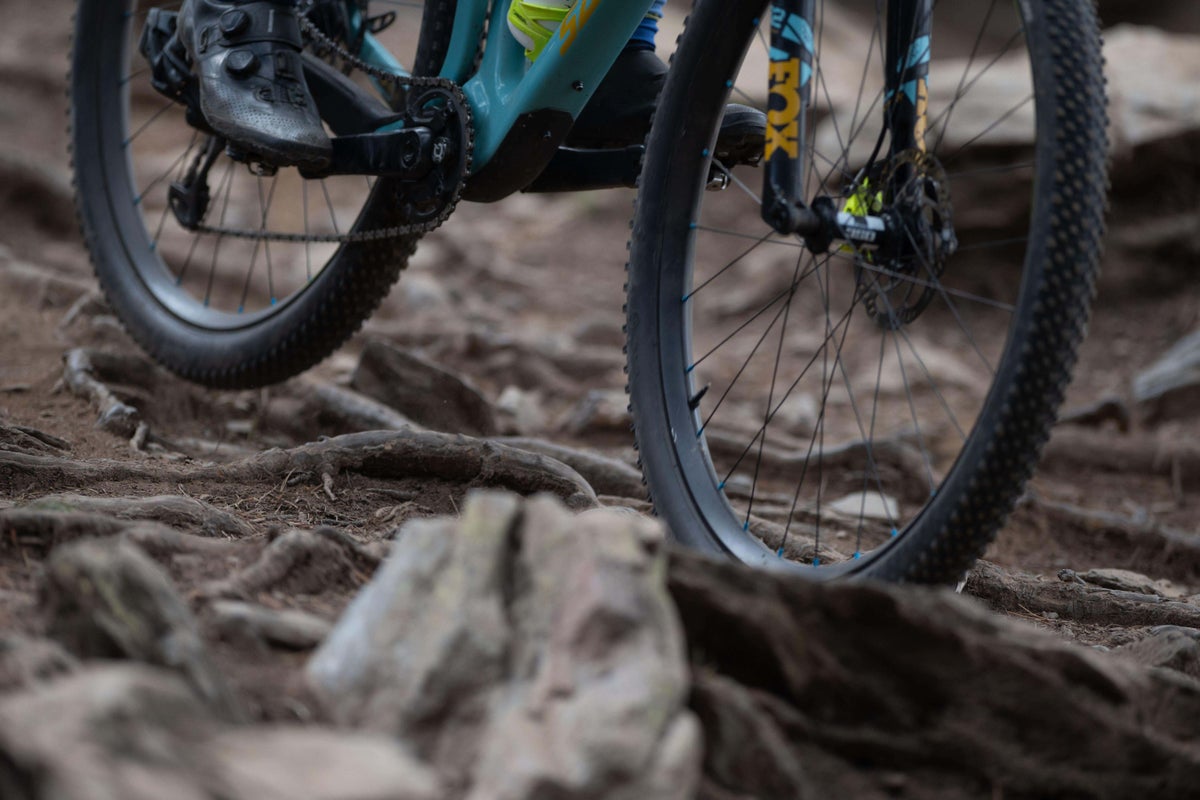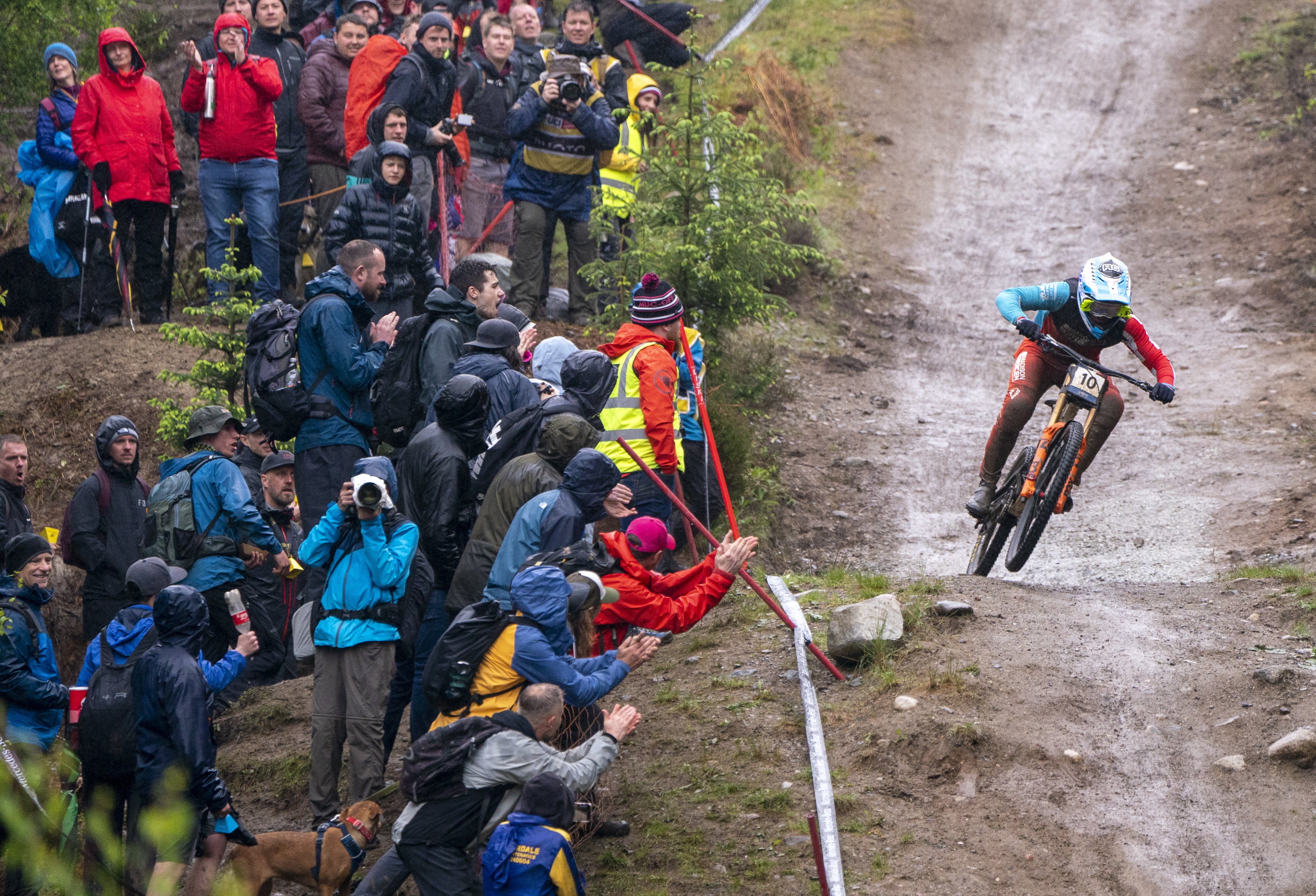
Top-level female competitors in downhill mountain biking (DHMTB) are “significantly” more at risk of injury than their male counterparts, a study has found.
The University of Edinburgh study, which looked at 230 elite cyclists taking part in the 2023 DHMTB world championships in Fort William, found female riders were more than twice as likely as male riders to get injured.
The study team monitored crashes in training and racing during the five-day event, and found that 20 of the 78 female competitors (25%) suffered injuries, compared with just 14 out of the 152 male competitors (9%).
Female riders have a significantly higher risk of head injury, in particular concussions, in comparison to their male counterparts
This equated, the researchers said, to 5.1 injuries per 100 rides among female competitors, compared with just 2.3 per 100 rides among male competitors.
The study also found female riders suffered more severe injuries than male riders – including being far more likely to suffer fractures, which carry the greatest “injury burden”.
The study indicated that females lost an average of 12.6 days to injury, compared with 5.5 days among male riders.
It also found females experienced a “significantly greater risk” of head injuries and concussions, with female riders being 9.5 times more likely to suffer head injuries than male riders, and 6.3 times more likely to suffer concussions.
The study team said more should be done to protect female participants in the sport, which Thomas Fallon, a clinical specialist physiotherapist and PhD student involved in the study, described as “one of the more extreme disciplines” in mountain biking.
“Downhill mountain biking is a discipline where you ride from the top of the hill to the bottom of the hill, and whoever can get to the bottom in one piece as quickly as possible is the winner,” he explained.
Mr Fallon said higher rates of head and neck injuries among female riders could be linked to an absence of “female-specific helmets”, coupled with potentially lower neck strength among women.
“Female riders have a significantly higher risk of head injury, in particular concussions, in comparison to their male counterparts,” he said.
“Neck strengthening is probably an important consideration that should be taken forward for injury prevention programmes, especially for the female athletes.
“Because when riders do fall, they are wearing a helmet that’s probably between 800 grams and 1.5 kilograms, which will then, on impact, contribute to a rotational force that will potentially increase the predisposition to concussion, and also those head- and neck-related musculoskeletal train type injuries.”
The researchers also said the higher risk of fractures among female riders showed the importance of resistance-based exercise and screening for risk factors for low bone mineral density.

The study found the injury rate among male riders was markedly lower during races than during the two training runs riders are required to complete, with 3.6 injuries per 100 rides in training compared with 0.9 per 100 rides in racing.
Injury rates among female riders, on the other hand, remained far more consistent across the two, with 5.8 injuries per 100 rides in training runs, compared with 4.5 per 100 rides in racing.
This indicated, Mr Fallon said, that “there may be a benefit to an extra training round, or making it mandatory that the riders walk the course, or similar.”
The study, which was undertaken in conjunction with world cycling body Union Cycliste Internationale, also looked at the role of medical professionals at DHMTB events.
It found the most common interventions by medical staff involved lifting injured competitors, stopping them from moving after an accident, and removing the helmets of injured cyclists.
The researchers said this highlighted the value of pre-event scenario training – including run-throughs in helmet removal, neck stabilisation and lifting – to ensure medical staff can respond to the “unique demands” of DHMTB.
The study also called for “injury surveillance” at events to better understand the demands and risks involved, which researchers said could be introduced with “little burden” on organisers and medical staff.
The Edinburgh researchers, who collaborated with Queen’s University Belfast, are based in the UK Collaborating Centre on Injury and Illness Prevention in Sport, an International Olympic Committee Research Centre.
The study is published in the journal BMJ Open Sport and Exercise Medicine.







